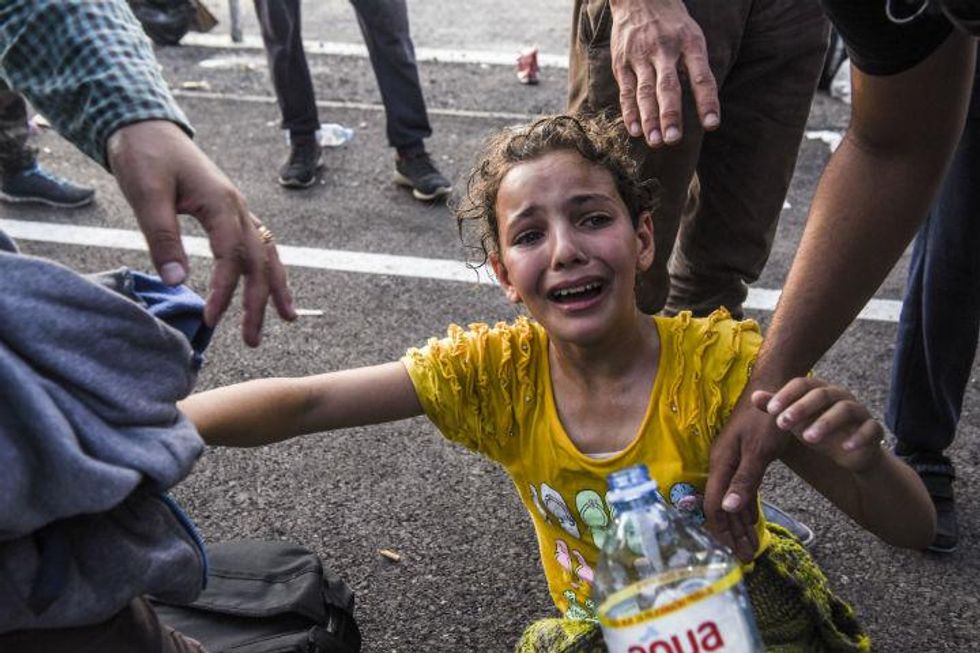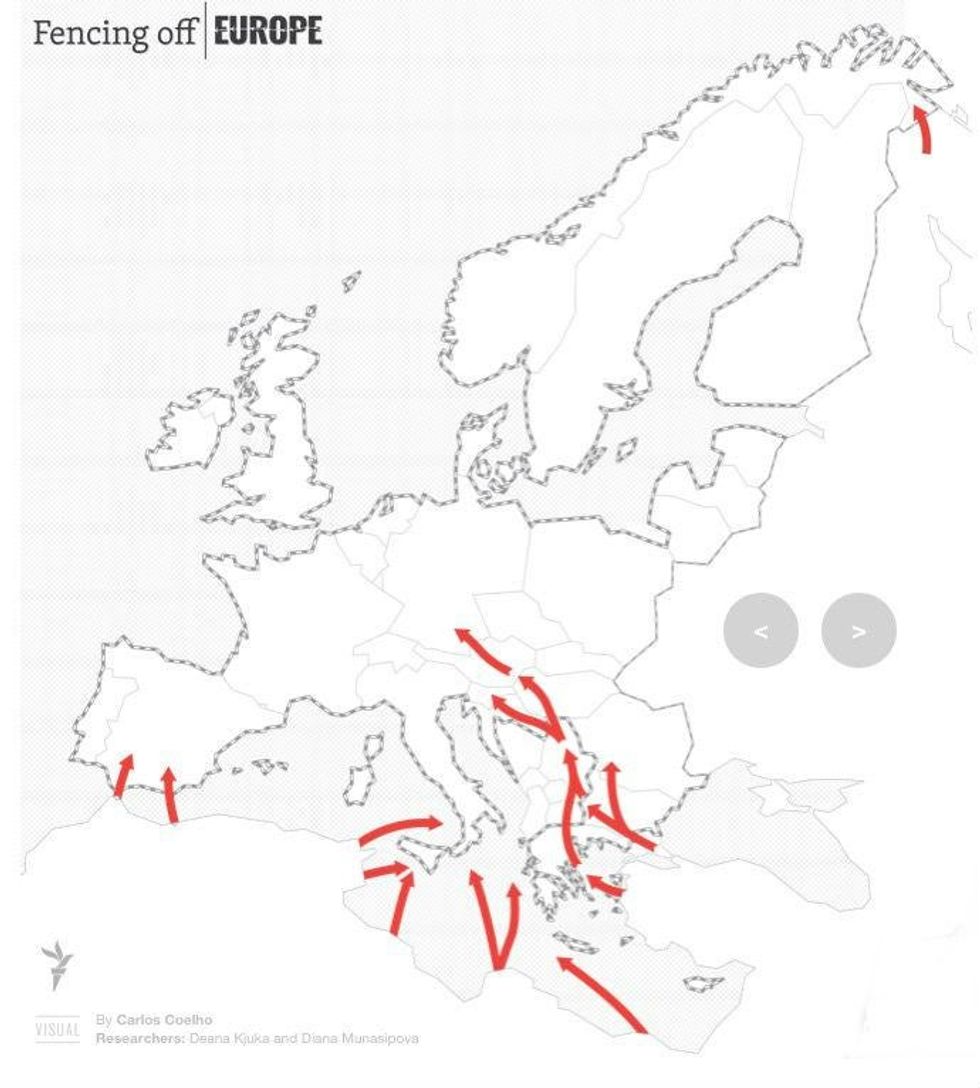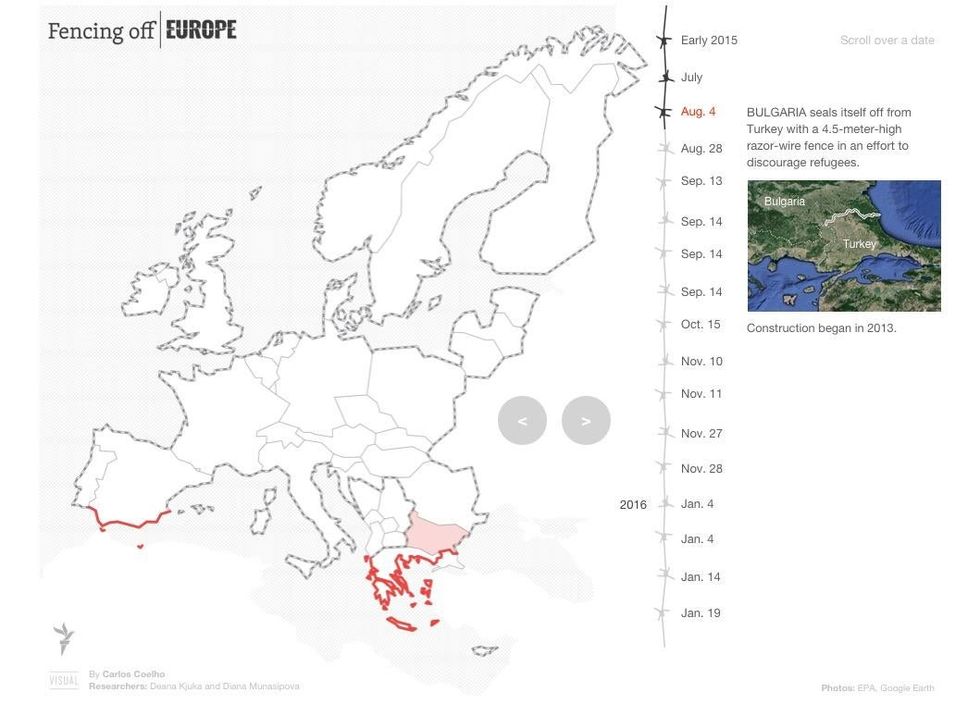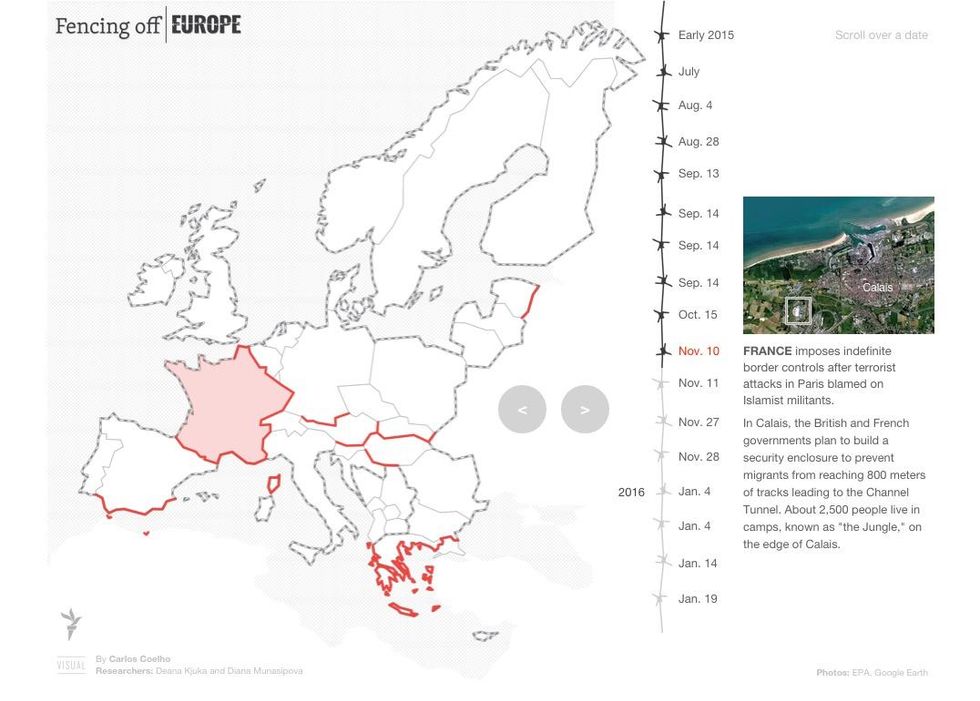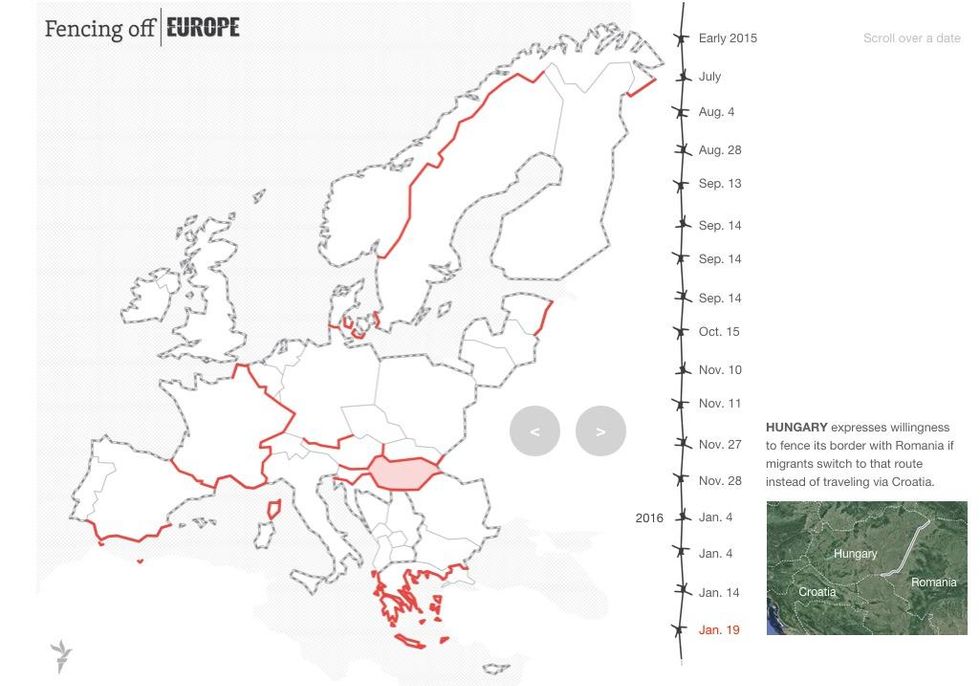News
Bethan McKernan
Feb 24, 2016
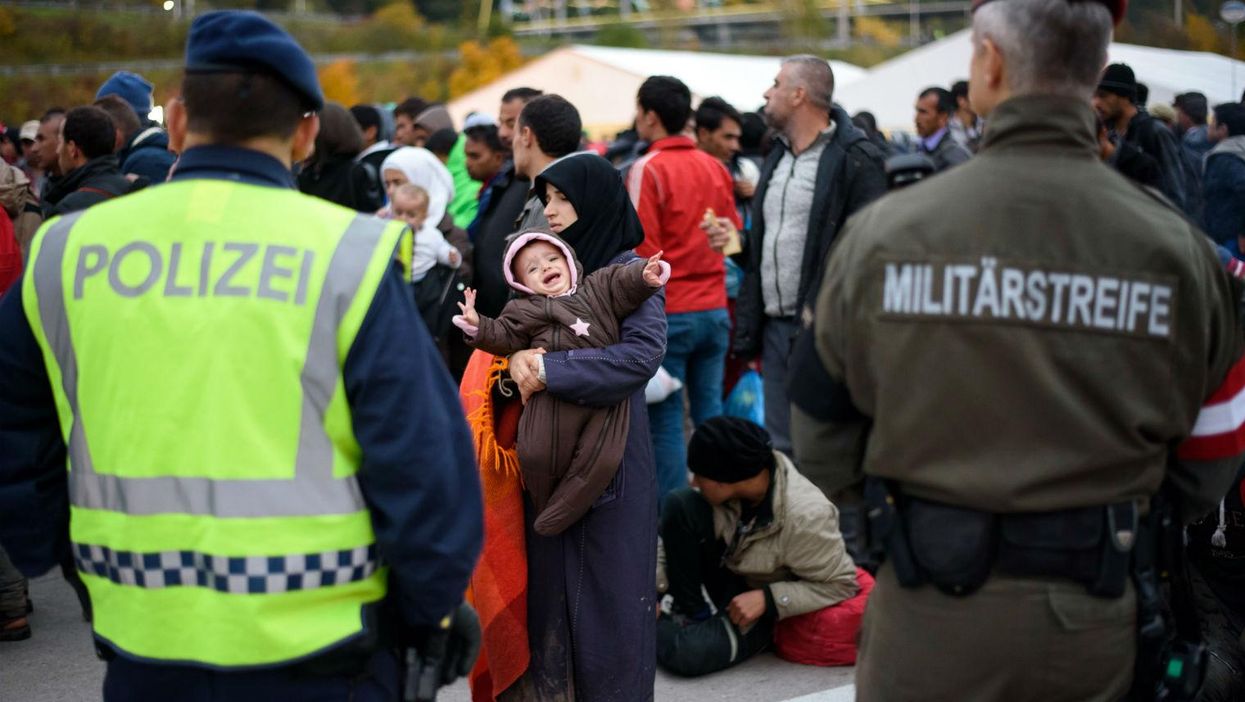
Picture: Jure Makovec/Getty
More than one million people fleeing conflict, poverty and persecution at home made the perilous journey to Europe in 2015.
The response to the humanitarian crisis from the EU and its members states has been woeful. Only 185,000 people have been granted protection status across the bloc.
In Hungary, riot police fired tear gas and water cannon on men, women and children at a refugee protest that lasted several days on the Serbian border.
Hundreds of people had gathered at a recently closed crossing point which stood in their way of the journey to Germany, which led to a tense stand-off in which some people threw missiles including stones and water bottles.
In Denmark, items of value are being confiscated from incoming asylum seekers as part payment for the services they are entitled to under international law.
Razor-wire fences and border guards are becoming a common sight on the borders of countries that make up the so-called refugee trail from Greece to Berlin.
Slovenia, Austria, Hungary and Macedonia have all put up fences and deployed privately contracted border guards despite the Schengen Agreement, which allows free movement for EU citizens and visa holders across borders.
The EU is expected to suspend Schengen for at least two years as many other countries are beginning to reinstate their own controls.
Bulgaria became the first country to erect a 4.5m high razorwire fence along the Turkish border to discourage refugees in August 2015:
France implemented indefinite border controls after the November 13th attacks in Paris.
In Calais, the UK and French government began a security enclosure to keep people in the Jungle camp from reaching the Channel Tunnel.
Norway and the rest of Scandinavia began tigtening entry controls from November 27th onwards.
In January, Norway expelled refugees who arrived over the Russian border. Russia responded by closing its own border.
Today, the free-movement zone looks like this:
Explore the timeline of how Schengen is being abandoned with this interactive from Radio Free Europe below.
Click on the map to start:
More: This brilliant map is debunking myths about the refugee crisis
Top 100
The Conversation (0)
